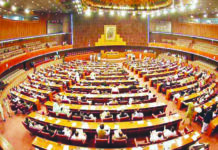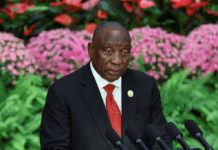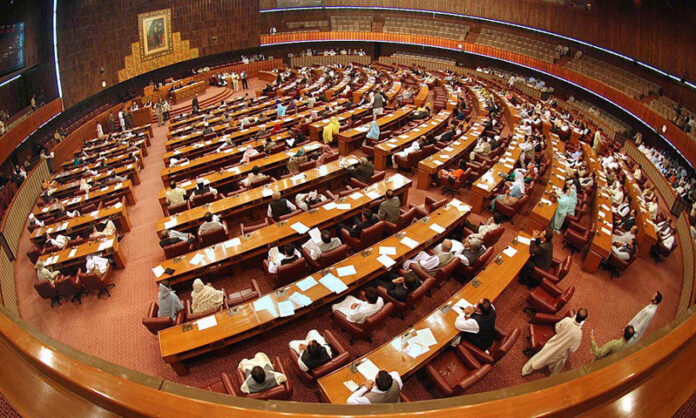AT PENPOINT
Constitutions, or the basic law by which states are governed, can be either rigid or flexible. One example of a rigid constitution is that of the USA, which is amended by passage of the amendment by two-thirds majorities in both Houses of Congress, followed by ratification by the legislatures of three-fourths of the states. This rather inconvenient procedure has meant that while there have been no less than 11,848 amendments proposed, only 22 have been passed and then ratified. Both Houses last passed a proposal to amend in 1976, but by the time the seven-year deadline for ratification ended, only 16 states had ratified.
On the other hand, there are flexible constitutions, with the British being the best example. The British also unwritten, consisting of both statutes passed by Parliament as well as conventions based solely on practice. They are probably the easiest to overturn, for they may need the exertion of will by one person. Fot example, it is an iron rule that the monarch does not refuse assent to a Bill passed by both Houses. The last time assent was refused was in 1708. Yet it is nowhere in writing that the monarch shall always assent. It just needs a monarch to refuse. The Constitution would stand amended.
It can also be amended by Parliament, by a simple majority of those present and voting in the Commons. The House of Lords may delay the constitution change for a year, but it cannot reverse it.
Pakistan probably falls somewhere in between, because its Constitution is to be amended by one body, the federal Parliament, without any role for any other body, such as the provincial assemblies or (as in some states) the electorate (though a referendum). However, the government must have learnt from its recent fiasco that even the relative flexibility of a Constitution is not really going to be of much help in amending it.
Perhaps there were two major factors in the government’s debacle: the reason for the amendments, and the lack of numbers it suffered from. The lack of numbers meant that the government had to depend on other parties. It is a sad irony for the government that in the end it was the handful of JUI(F) members which prevented it from gathering enough numbers. However, it is clear that, quite apart from whatever blandishments it may have offered, the JUI(F) could not see any political advantage in the amendments themselves.
Perhaps most important was the reason for the amendments. The PML(N) may well be clawing egg off its face and saying that it has no problem with Mr Justice Mansoor Ali Shah, who is scheduled to take over as Chief Justice for a year in October, nut the fact of the matter is that one of the advantages of keeping Mr Justice Faez Isa as Chief Justice will be to ensure that Mr Justice Shah does not become Chief Justice for some time.
There are many amendments, perhaps the most important being the introduction of a constitutional court, with the Supreme Court only to exercise only an appellate jurisdiction on high court decisions. The idea of a constitutional court is not really known to the common law, with only South Africa, Uganda and Singapore the only ex-British colonies among the 62 countries which have such courts.
This government is not the first to wish for control of the judiciary. The problem is that, left alone, the judiciary (which consists of elevated lawyers and junior judges) cannot avoid imposing the rule of law. Therefore, they are not to be left alone. History has shown that all parties want to control the judiciary. Politicians try to do so through amending the Constitution. They do not have the martial law option of forcing a fresh oath, and then picking and choosing judges.
One could argue that the amendments shift the goalposts for PTI chief Imran Khan. One must also acknowledge the inventiveness of the legal profession. It is not for nothing that commercial lawyers develop an expertise in constitutional law, while criminal lawyers usually move to constitutional law in their arguments. By moving appeals from high court decisions to issue writs to the constitutional court, Parliament is in effect adding another layer of appeal: after the appeal to the Supreme Court on grounds of fact, there will be an appeal to the constitutional court on constitutional grounds. In each appeal, there will also be a review petition. Even if the appeals and the review petitions are dismissed for being frivolous, until those decisions are given, the convict will remain un-hanged, or tens of millions in taxes will remain unpaid.
Now while the government may have seen benefits in the amendments, it was not able to convince the JUI(F). It should have realized that amending the Constitution is no ordinary legislation. The executive power is entrusted to the majority in the National Assembly, whether a single party or a coalition, precisely because it can pass laws. However, unless given a massive mandate by the electorate, no single party can change the Constitution.
That means that while all other legislation can be subject to party politics, with the opposition free to pick as many holes in it as possible, constitutional amendments require a consensus, and a different attitude from both government and opposition. That consensus can only be built across party lines where all or virtually all political forces feel that the amendment makes political sense. The repeal of the presidential dissolution power in 1997 by the second Nawaz government is illustrative. All joined in, because both parties had been victims of this provision.
It should be remembered that another attempt to amend the Constitution, making Islam the supreme law, was ultimately not pressed, because even Treasury members grew antsy about what was happening.
However, there is a considerable difference between that setback and this. Because there were no votes really required beyond the PML(N), it was possible to contain the matter within the party. There were no recriminations such as are being seen now, where Interior Minister Mohsin Naqvi and Law Minister Nazeer Tarar are being roundly blamed for this failure. Mian Nawaz Sharif’s failure then did not really affect his ability to rule, but question marks have cropped up over Mian Shahbaz Shari’s ability to continue. Again, it is a matter of numbers. Whereas Mian Nawaz commanded a two-thirds majority in Parliament, at the moment Mian Shehbaz depends on PPP support for survival. Therefore the pledges by the government to try again should not be taken simply as empty promises, but as a statement of intent.
The government is hoping not to be left hanging. Mian Shehbaz might have seemed to be playing a desperate gamble, overplaying a relatively weak hand by trying for a constitutional amendment without sufficient numbers. He may now hope that those who encouraged him on that course might now step up and deliver the Maulana. The Maulana is known to work in close coordination with the establishment, and the PTI is jubilant over his denying the PML(N) the requisite numbers. This is seen as a positive sign that the establishment is coming round to its side.
Imran’s statement that the amendments were meant against him should not be ignored. There can be little doubt that the government’s difficulties with the judiciary centred around decisions which were giving relief to Imran Khan. Mr Justice Isa has the distinction of having upset both parties. Politicians forget that judges have to be given arguments and arguments, and cannot conjure up verdicts out of thin air.
This government is not the first to wish for control of the judiciary. The problem is that, left alone, the judiciary (which consists of elevated lawyers and junior judges) cannot avoid imposing the rule of law. Therefore, they are not to be left alone. History has shown that all parties want to control the judiciary. Politicians try to do so through amending the Constitution. They do not have the martial law option of forcing a fresh oath, and then picking and choosing judges.























